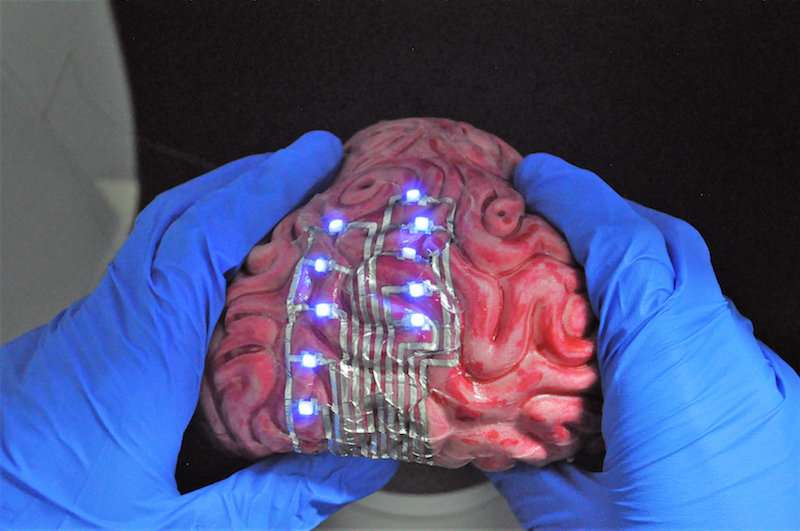Ultrathin electronic tattoos for wearable computing

Researchers at Carnegie Mellon University's College of Engineering are using an off-the-shelf printer to develop robust, highly flexible, tattoo-like circuits for use in wearable computing.
The low-cost process adds trace amounts of an electrically-conductive, liquid metal alloy to tattoo paper that adheres to human skin. These ultrathin tattoos can be applied easily with water, the same way one would apply a child's decorative tattoo with a damp sponge.
Other tattoo-like electronics either require complex fabrication techniques inside a cleanroom or lack the material performance required for stretchable digital circuit functionality on skin.
Carmel Majidi, an associate professor of mechanical engineering, is no stranger to overcoming obstacles in the area of soft electronics, a field in which he is a pioneer. In recent years, he has created liquid metal transistors, invisible circuits, self-healing circuits, and thermally conductive rubber (known as 'Thubber'). He and his team members in the Soft Machines Lab rolled up their sleeves to tackle flexible tattoos.
They succeeded.
"Our technique is simple, said Majidi. "We use a desktop inkjet printer to print traces of silver nanoparticles on temporary tattoo paper. We then coat the particles with a thin layer of gallium indium alloy that increases the electrical conductivity and allows the printed circuit to be more mechanically robust. The tattoos are ultrathin, very stretchable, and inexpensive to produce."
In addition to low-cost processing, these tattoos provide other advantages. Because they have mechanical properties similar to lightweight fabrics, they remain functional under bending, folding, twisting, and strains up to about 30% (which is the typical stretchability of human skin). They can conform and adhere to highly curved 3-D surfaces, like a model of a human brain or a lemon.
Applications for ultrathin, compliant tattoos include epidermal biomonitoring, soft robotics, flexible displays, and 3-D-transferable printed electronics.
The research was performed in collaboration between Carnegie Mellon's Soft Machines Lab and the Institute of Systems and Robotics at the University of Coimbra in Portugal.
The findings were published in the paper, "EGaIn‐Assisted Room‐Temperature Sintering of Silver Nanoparticles for Stretchable, Inkjet‐Printed, Thin‐Film Electronics," in Advanced Materials.
More information: Mahmoud Tavakoli et al. EGaIn-Assisted Room-Temperature Sintering of Silver Nanoparticles for Stretchable, Inkjet-Printed, Thin-Film Electronics, Advanced Materials (2018). DOI: 10.1002/adma.201801852















